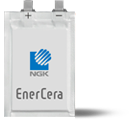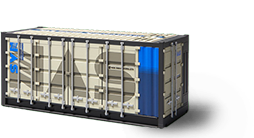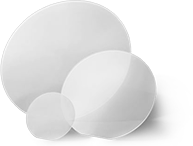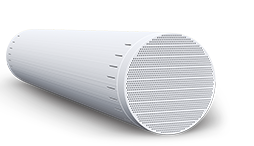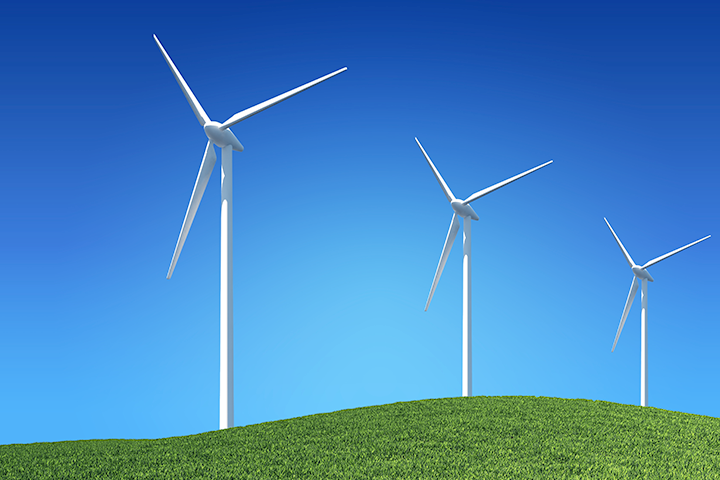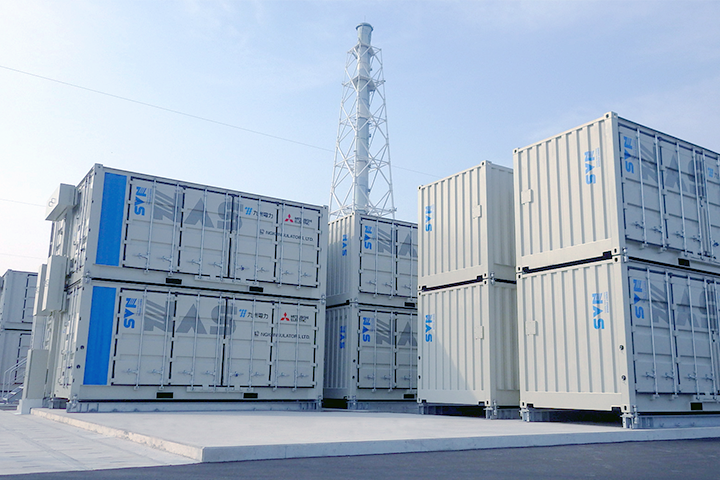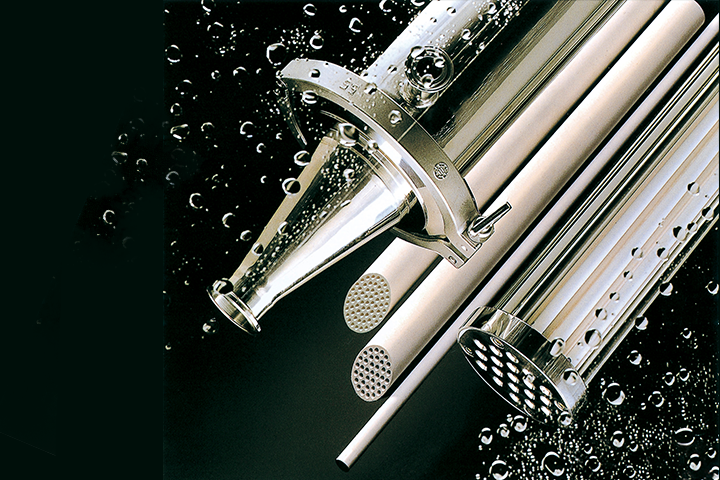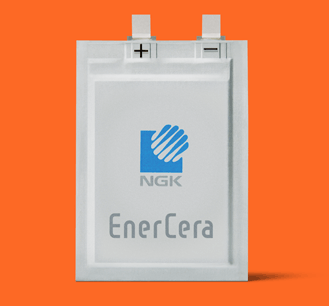
EnerCeraChip-type ceramic rechargeable batteries
EnerCeraChip-type ceramic rechargeable batteries
EnerCeraChip-type ceramic rechargeable batteries
Thin, heat-resistant, high-capacity rechargeable batteries to support the worldwide adoption of IoT technologies
NGK's EnerCera thin lithium ion rechargeable batteries deliver high heat resistance and high capacity.
These batteries are ideal for powering sensors and wireless communication units embedded in IoT devices.
EnerCera will power an IoT era in which a wide range of devices connect to the Internet.
Ideas for the future
Next-generation smart cards
Capable of withstanding the high temperatures encountered in card production, ultrathin, heat-resistant EnerCera cells are easily embedded in cards, paving the way for next-generation smart cards with multiple functions, including displays, fingerprint authentication, and communication with smartphones.

![]()
Industry, Innovation and Infrastructure
Build resilient infrastructure, promote sustainable industrialization and foster innovation
target 9.1
Develop quality, reliable, sustainable and resilient infrastructure, including regional and transborder infrastructure, to support economic development and human well-being, with a focus on affordable and equitable access for all
The need to power the more than 40 billion IoT devices around the world poses pressing issues.
IoT appears likely to become an important element of the infrastructure supporting our lives in both developed and developing countries. Some 40 billion IoT devices were deployed and in use in 2020; this number is expected to grow still further in the future. NGK powers IoT devices to support the foundations of economic growth worldwide.
Trends in numbers of IoT devices worldwide
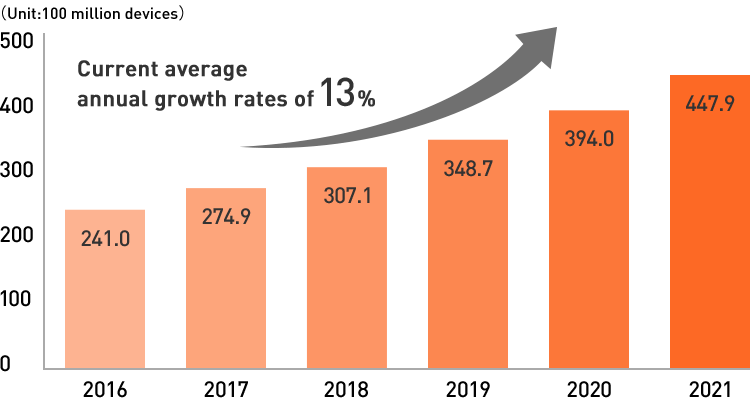
Source: Ministry of Internal Affairs and Communication, White Paper: Information and Communications in Japan (FY2019)
IHS Technology* estimates
*IHS Technology defines IoT devices as devices with fixed IP addresses capable of connecting to the Internet and devices usable as terminals on sensor networks.
Products paving the way to achieving the SDGs

InsulatorsInsulators for power transmission
InsulatorsInsulators for power transmission
Insulators, our namesake products, support electric power supply worldwide
Insulators play a crucial part in maintaining the safety and stability of our energy lifeline by ensuring that transmission lines and steel towers and equipment are completely isolated. The reliable quality and technological capabilities accumulated since our founding in 1919 support safe, reliable power supply in more than 100 countries around the world.
How NGK's products can help save the world
Compatible with world's highest 1,000 kV-class power transmission
Our name derives from our insulator products, which play key roles in power transmission. Our insulators are compatible with ultra-high voltage power transmission, a technology essential to increasing energy efficiency worldwide. Our reliable technologies deliver power around the world.

![]()
Affordable and Clean Energy
Ensure access to affordable, reliable, sustainable and modern energy
target 7.3
By 2030, double the global rate of improvement in energy efficiency
With energy consumption expanding worldwide, how can we use energy more efficiently?
Global energy consumption increased by about 2.2-fold from 1971 to 2014. As the global population grows and urbanization advances in emerging markets, energy consumption is expected to rise significantly. Meeting demand with limited resources under these conditions will require improved energy efficiency. NGK is helping to improve energy efficiency by producing insulators to deliver the power generated at power plants to consumers more efficiently.
Trends in global energy consumption
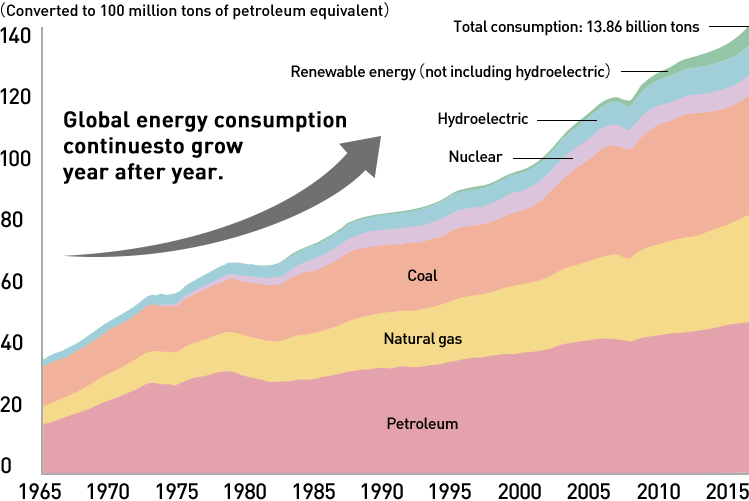
Source: BP statistics for 2019
Primary energy: Energy used as a resource as-is in the form extracted from nature
Products paving the way to achieving the SDGs
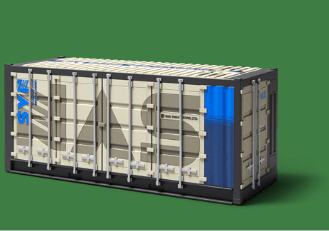
NAS BatteriesThe world's first large-capacity battery energy storage system
NAS BatteriesThe world's first large-capacity battery energy storage system
Energy storage systems for reliable supply of renewable energy
NGK was first in the world to succeed in commercializing NAS battery systems for energy storage offering both long service life and large capacity in a compact design. Generation by solar and wind involves inherent fluctuations, making it unstable. The stabilization made possible by storing renewable energy helps make the world a cleaner place.
How NGK's products can save the world
How can these products lead to the growth of renewable energy?
Renewable energy sources are unstable because they’re affected by the weather. When a large amount of renewable energy is connected to a grid, it might destabilize the grid, which is an obstacle to increased uptake of renewable energy. NAS battery systems can help promote the use of renewable energy by buffering this instability through charging and discharging.

![]()
Climate Action
Take urgent action to combat climate change and its impacts
target 13.1
Strengthen resilience and adaptive capacity to climate-related hazards and natural disasters in all countries
Reducing greenhouse gas emissions by applying the first technology of its kind in the world
Renewable energy is drawing attention as an earth-friendly source of energy thanks to its low levels of CO2 emissions. NAS battery systems, a key solution to realizing stable supply of renewable energy, have already been deployed at more than 200 sites worldwide, where they handle approximately 580 MW/4,000 MWh of electricity (as of January 2020).
Technologies from NGK mitigate the risks posed by climate change to help build sustainable societies.
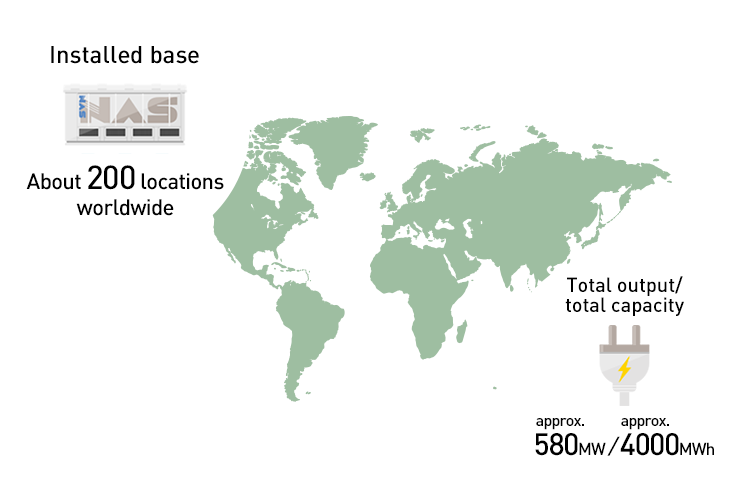

Products paving the way to achieving the SDGs

GaN wafersGallium nitride (GaN) wafers
GaN wafersGallium nitride (GaN) wafers
Materials essential to the semiconductors supporting next-generation devices that will power the future
Wafers are essential to semiconductor manufacturing. NGK's gallium nitride (GaN) wafers help realize high-output and high-efficiency laser light sources, thanks to their original crystal growth technology.
Look out for them in applications such as power devices used in electric vehicles and other products, as well as high-frequency devices used in telecommunications devices.
Technologies to change the future
The power to support 5G wireless behind the scenes
GaN wafers used in semiconductors for high-frequency devices, including 5G wireless base stations and satellite amplifiers.
Improving the performance of high-frequency devices will be key to the adoption of 5G wireless. NGK's technologies are helping to build the future of communications.

![]()
Sustainable Cities and Communities
Make cities inclusive, safe, resilient and sustainable
target 11.3
By 2030, enhance inclusive and sustainable urbanization and capacity for participatory, integrated and sustainable human settlement planning and management in all countries
5G: more than just smartphones
GaN wafers are expected to see wide use in 5G wireless applications. While existing 4G technologies mainly involve smartphones, 5G is expected to help create new social infrastructures by networking various aspects of society. GaN wafers will support the world of the future in areas like mobility and telehealth.
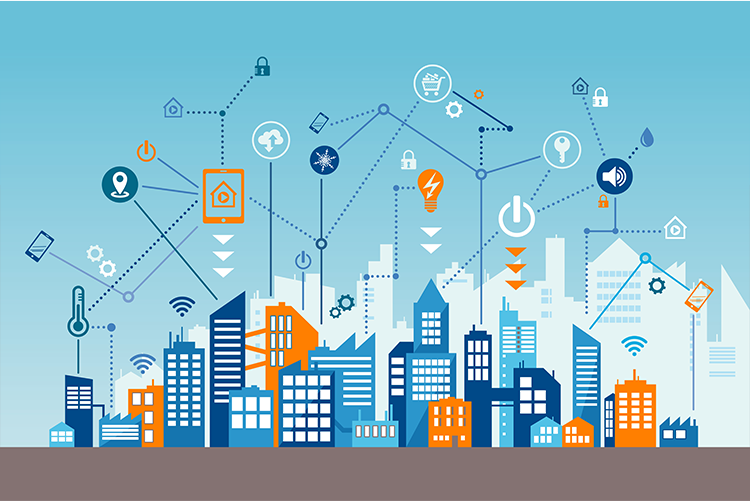

Products paving the way to achieving the SDGs
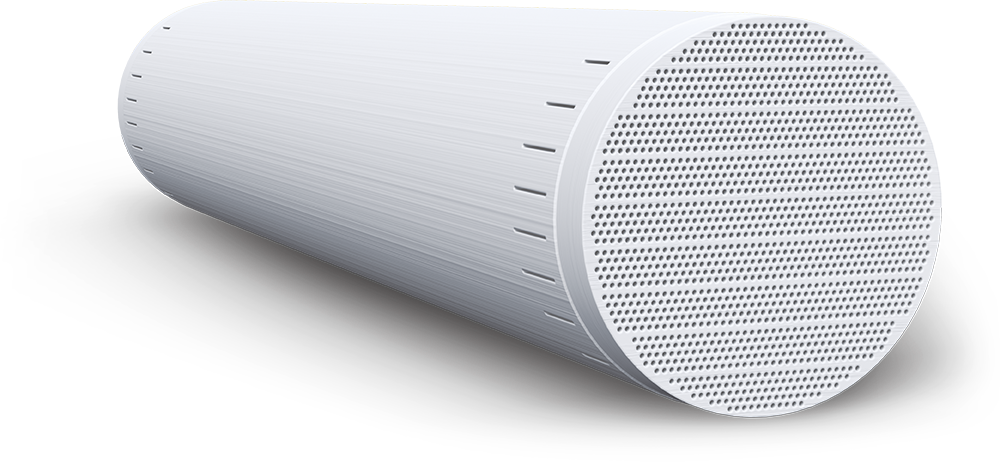
Subnano-ceramic membranesA revolutionary separation process
Subnano-ceramic membranesA revolutionary separation process
Gas separation by molecular sieve technique
Subnano-ceramic membranes* are ceramic filters with micropores smaller than one nanometer.
Molecules in gases can be separated by passing through the micropores in the membrane. This technology is currently drawing attention for its role in a revolutionary separation process based on the molecular sieve technique.
*The term subnano refers to dimensions smaller than one nanometer (one billionth of a meter).
Can we apply the strengths of molecular sieve technique to address energy issues?
Subnano-ceramic membranes
Separation equipment based on the subnano-ceramic membranes is capable of dramatically reducing CO2 emissions at lower cost compared to previous methods. The equipment also has small-footprint and requires less energy. Even under conditions of high pressure and high CO2 concentrations, it also delivers outstanding performance and service life superior to traditional equipment based on polymer membranes.
In natural gas refining, this technology reduces loss in separation to one-tenth achieved with polymer membranes, even in gas fields with high impurity concentration—it is often avoided in the past due to high refining costs. The technology promises to expand energy supply and advance environmental protection.

![]()
Affordable and Clean Energy
Ensure access to affordable, reliable, sustainable and modern energy
target 7.A
By 2030, enhance international cooperation to facilitate access to clean energy research and technology, including renewable energy, energy efficiency and advanced and cleaner fossil-fuel technology, and promote investment in energy infrastructure and clean energy technology
![]()
Climate Action
Take urgent action to combat climate change and its impacts
target 13.1
Strengthen resilience and adaptive capacity to climate-related hazards and natural disasters in all countries
Reducing CO2 emissions by separating, capturing, and reusing CO2 in crude oil production
Subnano-ceramic membranes are also expected to find applications in crude oil production.
The crude oil in oil fields accumulates inside tiny openings in rock formations. Primary oil recovery, in which natural energy is used to recover crude oil, typically recovers just 5-25% of it. Even secondary oil recovery, in which water is injected into underground oil strata, recovers only about 30-40% of it.
Carbon dioxide enhanced oil recovery (CO2 EOR), a tertiary oil recovery method, further increases oil recovery rates by injecting CO2 into the underground oil strata to reduce the viscosity of the oil.
Subnano-ceramic membranes could be used to separate CO2 in associated gases from oil fields implementing CO2 EOR.
Reports indicate about one-half of the CO2 injected remains sequestered underground. This method is increasingly introduced as a carbon capture and storage (CCS) solution that is a technology to capture CO2 and store it underground.
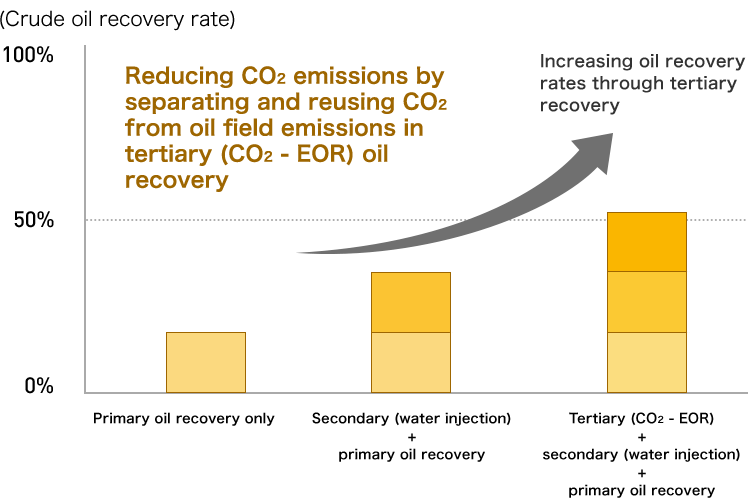
Source: JOGMEC website "Carbon dioxide (CO2) injection method"
Products paving the way to achieving the SDGs
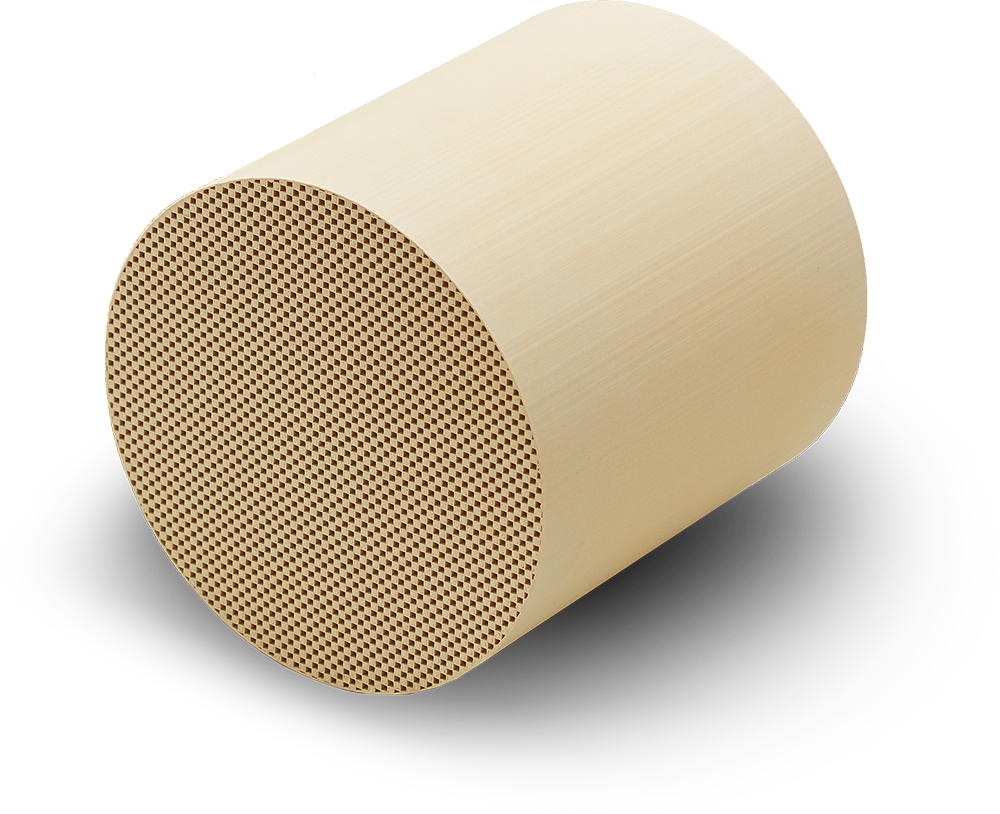
PM removal filtersEliminating harmful particulate matter (PM)
PM removal filtersEliminating harmful particulate matter (PM)
PM removal filters that clean automotive exhaust
PM removal filters are made of porous ceramics.
Examples of porous materials include sponges or pumices, which contain numerous fine openings. When exhaust gases are passed through a porous ceramic barrier, the fine openings trap harmful particulate matter (PM), allowing only clean gas to pass.
NGK's products help build a brighter future.
Incorporated into highly permeable masks, ceramics can help protect the air we breathe.
In general, smaller pores means filters are less permeable and more resistant to the passage of exhaust, reducing vehicle fuel efficiency. NGK's PM removal filters offer both effective PM capture and outstanding permeability and heat resistance. By achieving both improved fuel efficiency and cleaner exhaust, they help protect air quality.

![]()
Good Health and Well-Being
Ensure healthy lives and promote well-being for all at all ages
target 3.9
By 2030, substantially reduce the number of deaths and illnesses from hazardous chemicals and air, water and soil pollution and contamination.
Drawing on an array of materials and methods to achieve clean exhaust
In addition to PM removal filters that capture harmful particulates, the NGK ceramics used to clean exhaust incorporate Honeyceram to improve the efficiency of the catalysts used to purify harmful hydrocarbons, carbon monoxide, and nitrogen oxide (NOx) and NOx sensors that measure harmful NOx concentrations to assist various controls—reflecting our extensive efforts to find new ways to clean exhaust.
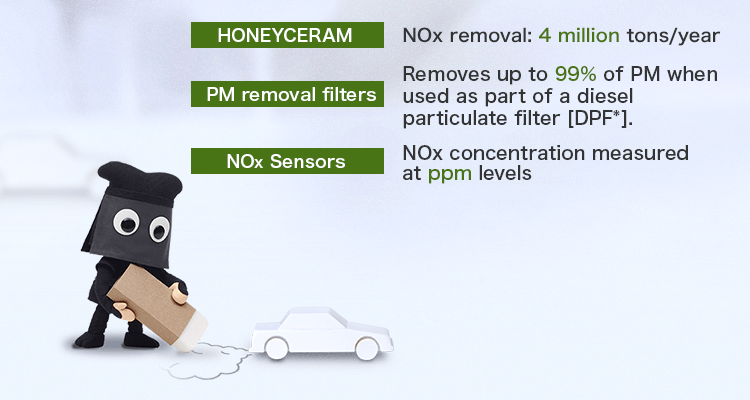
*Diesel Particulate Filters
Products paving the way to achieving the SDGs
Envisioning SDGs from 100 years ago
Over the century since its founding, NGK has continued to support the stable supply of electric power.
Over this period, we've deployed businesses to keep our air and water clean and deliver more comfortable lives across the domains of energy, ecology, and electronics.
Most NGK technologies and products make significant contributions to achieving the Sustainable Development Goals (SDGs).
Up to this point and into the future, NGK will continue to draw on ceramics technologies to deliver new value to help realize sustainable societies.
Value Creation
by the NGK Group
Addressing society’s challenges, developing new areas for growth
Pursuing our vision through investment in growth areas
Megatrends

NGK Group Input (Fiscal 2020)
Financial capital
- Total assets
- 909 billion yen
- Shareholders’ equity
- 501.5 billion yen
Manufactured capital
- Capital expenditures
- 50.8 billion yen
- Tangible fixed assets
- 372.2 billion yen
Intellectual capital
- R&D expenses
- 22.4 billion yen
- Number of patents held
- Japan 3,521
Overseas 4,452
Human capital
- Employees
- 19,695 people
Social and relationship capital
- Consolidated subsidiaries
- 45
- Social contribution
activity expenses - 296 million yen
Natural capital
- Electricity
- 880,000 MWh
- Gas
(natural gas conversion) - 116 million Nm3
- Oil
(light oil conversion) - 1.65 million liters
- Raw materials used
- 140,000 metric tons
- Total water usage
- 3.78 million m3
Business Activities
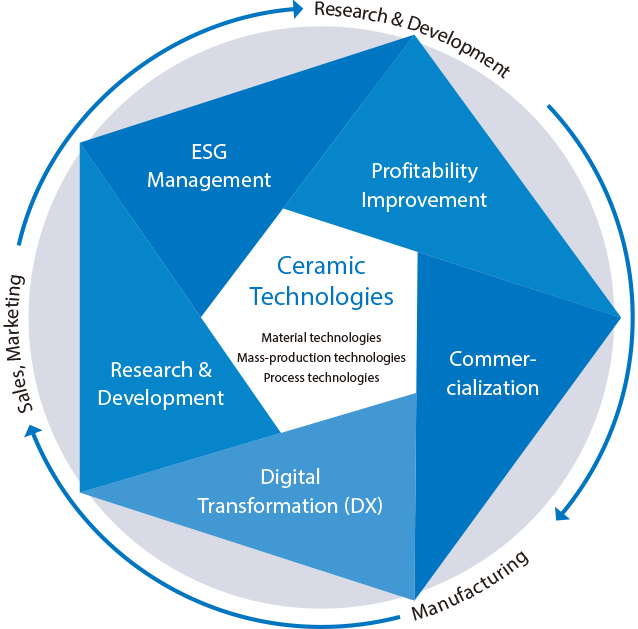
NGK Group Output (Fiscal 2020)
- Net sales
- 452.0 billion yen
- Operating income
- 50.8 billion yen
- Net income attributable to
owners of the parent - 38.5 billion yen
- Return on equity (ROE)
- 7.9%
- Gross profit
- 123 billion yen
- New product*sales ratio
*Within 5 years of commercialization - 30%
- Employee satisfaction (NGK)
- 68%
- Number of female managers (NGK)
- 29 people
- CSR Procurement Guideline adoption rate
for business partners - 99.6%
- Overseas students supported
-
39 students from 5 countries stayed
in company dormitoryScholarships (non-repayable) for 20 students
from 10 countries
- CO2 emission
- 756,000 metric tons
- Discarded materials reduction
- 3,000 metric tons
-
Sales growth for products contributing
to environmental protection
(Figures are indexed with fiscal 2013 set at 100) - 144
- Recycling rate
- 99.7%
Charting a Course Ahead
NGK Group Vision
A company to contribute to carbon neutrality and digital society
with our unique ceramic technologies
Carbon Neutrality
Making clean energy more efficient
Making mobility clean and safe
Digital Society
Making smart society more comfortable
Making industries innovative

Delivering new value and happiness to society:
NGK envisioned the SDGs 100 years ago

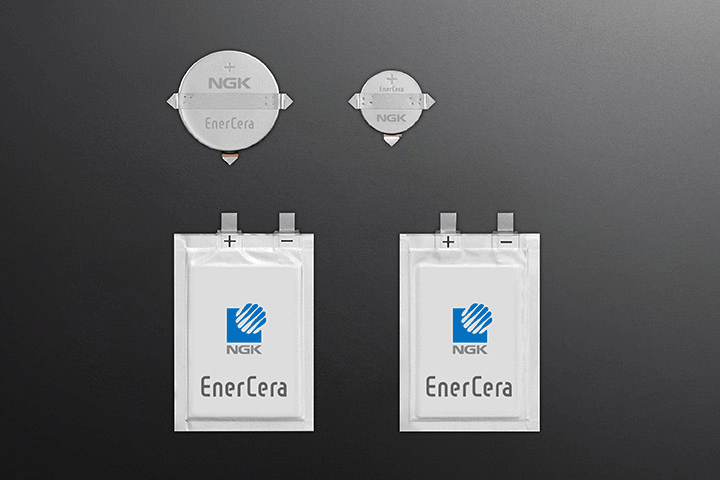
Chip-type ceramic rechargeable batteries, "EnerCera"
The EnerCera series is a line of thin, compact, high energy density Li-ion rechargeable batteries incorporating NGK's proprietary Crystal Oriented Ceramic Plate as electrodes. Featuring high heat resistance, the series is offered in two types. These batteries will contribute to expanding use of IoT devices, smart cards, and other next-generation devices.
Products paving the way to achieving the SDGs
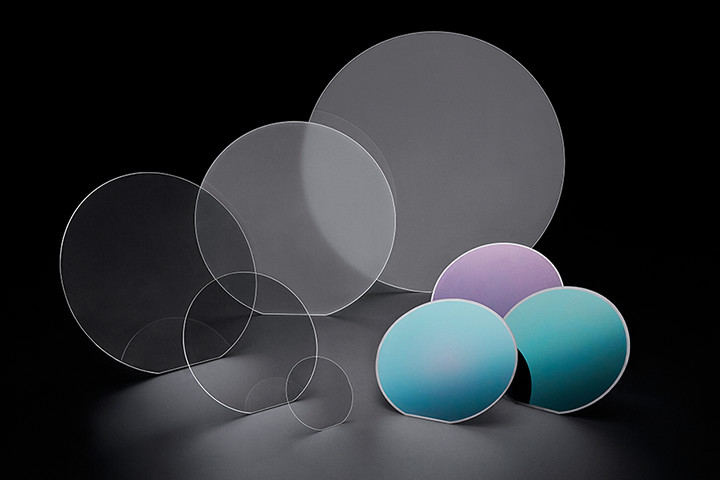
Wafer products for electronic devices
NGKs' proprietary high-performance wafer products fully exploit our crystal growth technologies and dissimilar material bonding technologies. These wafers will bring further innovations to fields such as power semiconductors and high-capacity data communications.
Products paving the way to achieving the SDGs
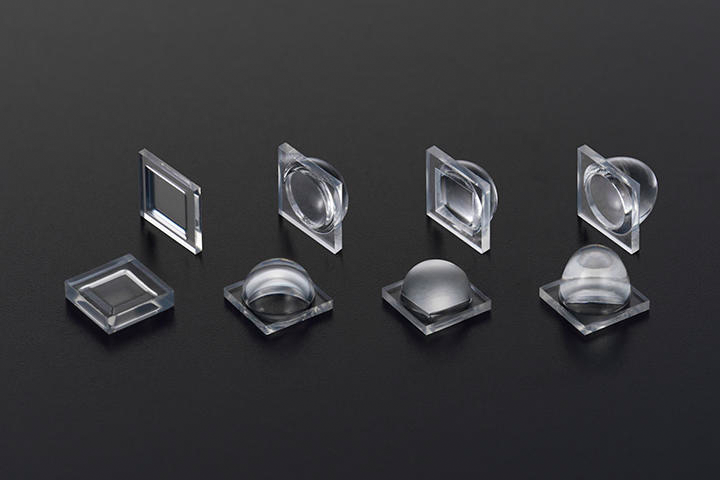
Micro-lenses for ultraviolet LEDs
Ultraviolet LEDs are used in applications like sterilization and resin hardening. We've developed micro-lenses that improve the sterilization effects of ultraviolet LEDs by drawing out their light more efficiently and focusing it more precisely on the target. These lenses utilize quartz glass with superior transparency and durability, enabling complex shapes that had been difficult to achieve before.
Products paving the way to achieving the SDGs
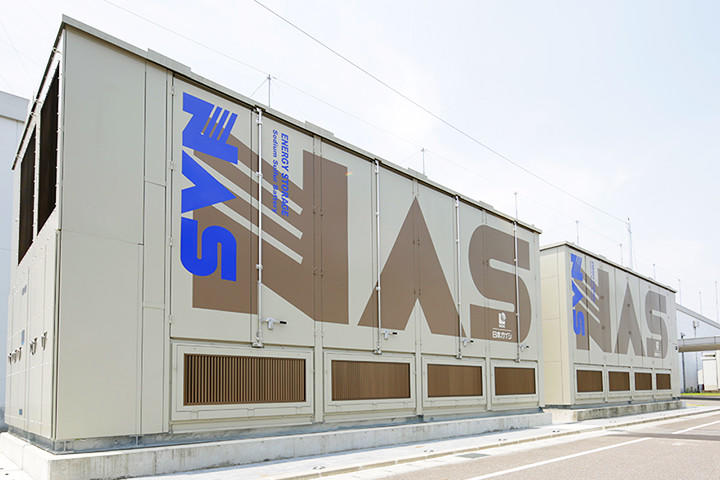
NAS Batteries
A product of NGK's proprietary advanced ceramic technologies, the NAS battery was the world's first commercial battery system capable of megawatt-class electric energy storage. The battery is proving to be instrumental in expanding the use of renewable energy and establishing smart grids.
Products paving the way to achieving the SDGs

Gallium nitride (GaN) wafers
NGK's original crystal growth technology has resulted in wafers featuring low defect density across the entire wafer surface. Increasing output from lasers and producing LEDs with unprecedented ultra-high brightness, these wafers can be used as light sources in applications such as projectors and stadium lighting.
Products paving the way to achieving the SDGs
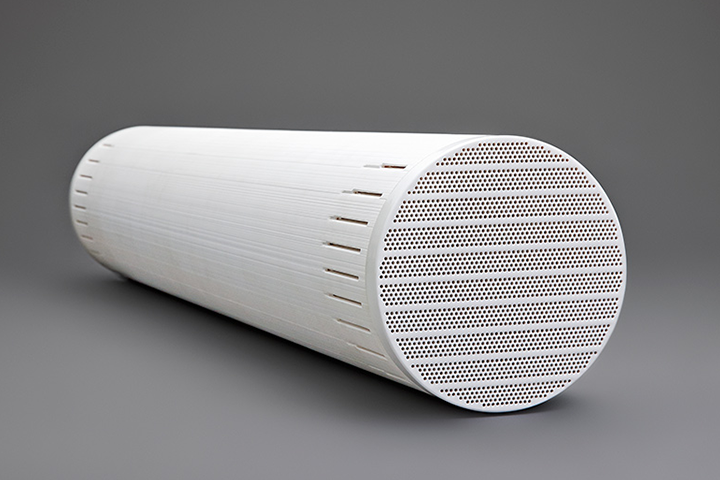
Subnano-ceramic membranes
With the development of subnano-ceramic membranes, which can separate specific molecules from mixed liquids or gases, we've achieved another quantum leap in performance. These new ceramic filters will enable innovative separation processes with the potential to save energy and cut costs.
Products paving the way to achieving the SDGs

Insulators
Insulators play an important part in maintaining the safety and stability of our energy lifeline by ensuring that transmission lines and steel towers and equipment are completely isolated. Backed by uncompromising quality and advanced technology, our products continue to make power supply safe and secure.
Products paving the way to achieving the SDGs

Ceramic products for automotive exhaust control system
We contribute to environmental protection by developing cleaning technologies compatible with stricter emissions regulations. Examples include HONEYCERAM ceramic substrates for automotive catalytic converters, which help to detoxify harmful substances from automotive exhaust, and diesel particulate filters (DPF) and gasoline particulate filters (GPF) incorporating porous ceramic filter technologies to remove particulate matter (PM).
Products paving the way to achieving the SDGs

NAS Batteries
A product of NGK's proprietary advanced ceramic technologies, the NAS battery was the world's first commercial battery system capable of megawatt-class electric energy storage. The battery is proving to be instrumental in expanding the use of renewable energy and establishing smart grids.
Products paving the way to achieving the SDGs

Gallium nitride (GaN) wafers
NGK's original crystal growth technology has resulted in wafers featuring low defect density across the entire wafer surface. Increasing output from lasers and producing LEDs with unprecedented ultra-high brightness, these wafers can be used as light sources in applications such as projectors and stadium lighting.
Products paving the way to achieving the SDGs

Subnano-ceramic membranes
With the development of subnano-ceramic membranes, which can separate specific molecules from mixed liquids or gases, we've achieved another quantum leap in performance. These new ceramic filters will enable innovative separation processes with the potential to save energy and cut costs.
Products paving the way to achieving the SDGs
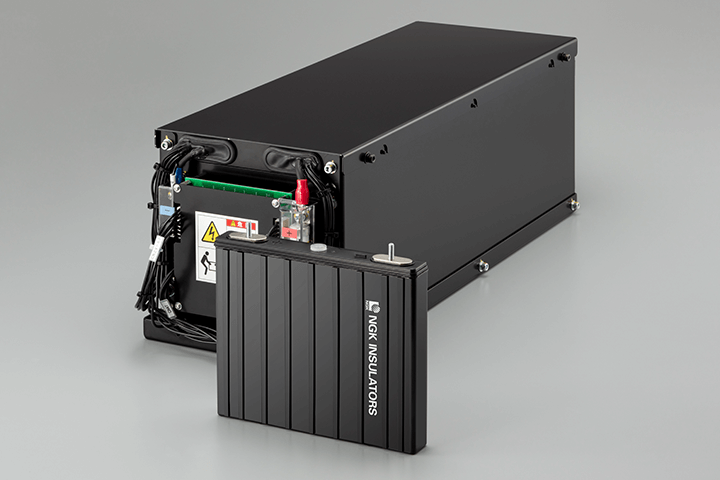
Zinc Rechargeable Batteries
NGK's new rechargeable batteries achieve high energy density and relatively low cost by using a zinc-based material.
NGK have solved the short circuit problem caused by repeated charging and discharging cycles by developing our own proprietary hydroxide ion conductive ceramic separator.
We are developing inherently safe zinc rechargeable batteries optimized for indoor installations.
Products paving the way to achieving the SDGs
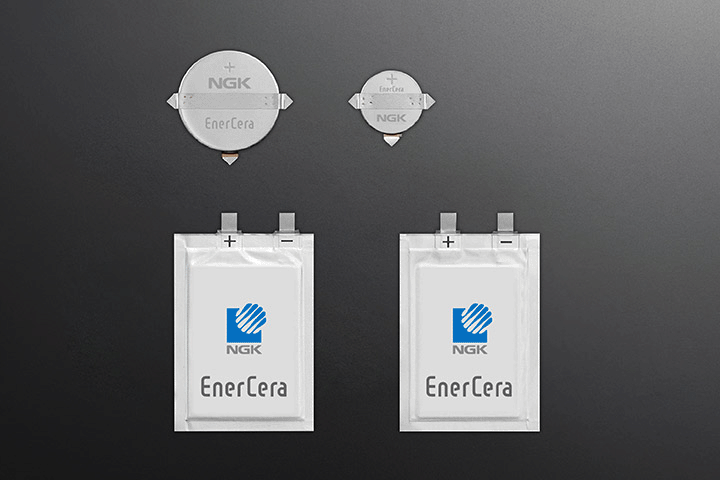
Chip-type ceramic rechargeable batteries, "EnerCera"
The EnerCera series is a line of thin, compact, high energy density Li-ion rechargeable batteries incorporating NGK's proprietary Crystal Oriented Ceramic Plate as electrodes. Featuring high heat resistance, the series is offered in two types. These batteries will contribute to expanding use of IoT devices, smart cards, and other next-generation devices.
Products paving the way to achieving the SDGs

Insulators
Insulators play an important part in maintaining the safety and stability of our energy lifeline by ensuring that transmission lines and steel towers and equipment are completely isolated. Backed by uncompromising quality and advanced technology, our products continue to make power supply safe and secure.
Products paving the way to achieving the SDGs
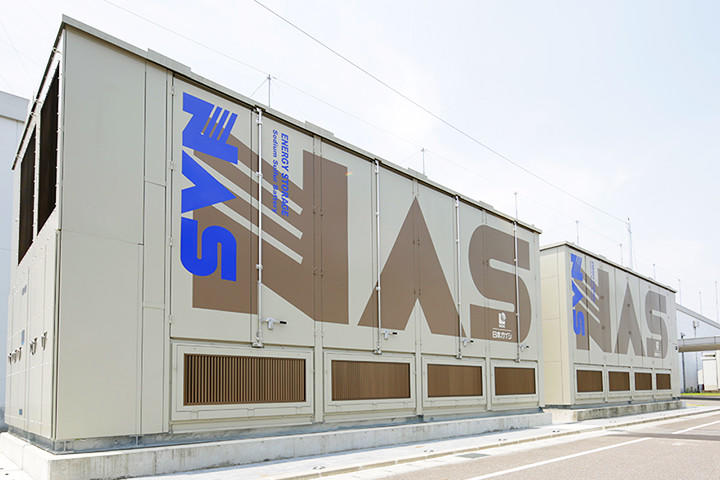
NAS Batteries
A product of NGK's proprietary advanced ceramic technologies, the NAS battery was the world's first commercial battery system capable of megawatt-class electric energy storage. The battery is proving to be instrumental in expanding the use of renewable energy and establishing smart grids.
Products paving the way to achieving the SDGs

Gallium nitride (GaN) wafers
NGK's original crystal growth technology has resulted in wafers featuring low defect density across the entire wafer surface. Increasing output from lasers and producing LEDs with unprecedented ultra-high brightness, these wafers can be used as light sources in applications such as projectors and stadium lighting.
Products paving the way to achieving the SDGs
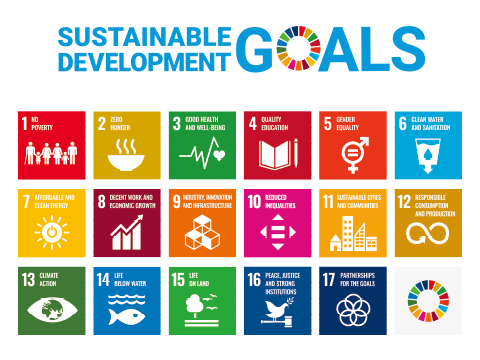
About SDGs
The SDGs refer to the Sustainable Development Goals adopted in September 2015 by the United Nations as goals for the international community to achieve by 2030. They identify 17 goals and 169 specific targets for addressing severe social and environmental challenges, calling for all nations, whether developed or developing, to protect the earth while pursuing prosperity.

Industry, Innovation and Infrastructure
Our products, like the ceramics used in semiconductor manufacturing equipment for their stable performance even in rigorous semiconductor manufacturing processes and the beryllium copper alloys used across a wide range of applications, including mobile phones, automobiles, and production machinery, support manufacturing infrastructures responsible for creating a vast range of end-user products.
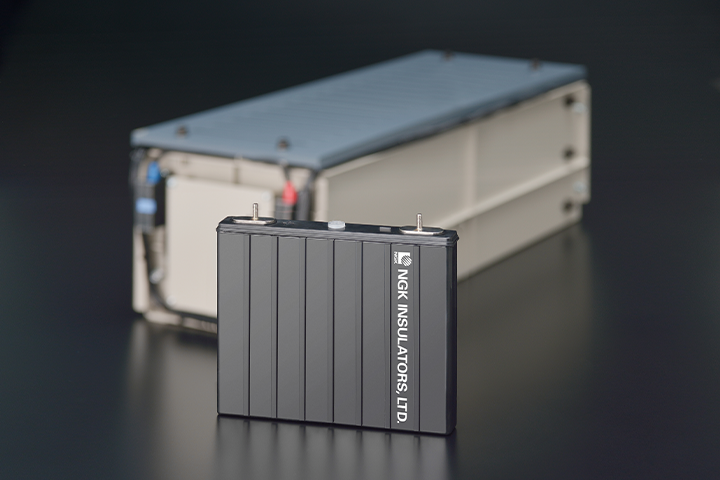
Climate Action
Our solutions, including NAS battery systems and ZNB zinc rechargeable batteries that store electric power generated by solar and other renewable sources for use when needed, can reduce use of thermoelectric power, which generates the carbon dioxide (CO2) emissions implicated in global warming.
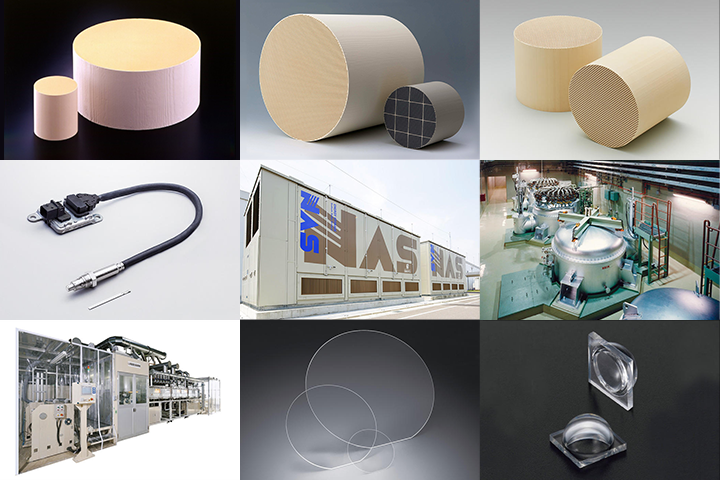
Definition of NGK products that contribute to environmental protection
The NGK Group considers contributing to society through business activities to be one of its most important missions. For nearly a century since its founding, NGK has made use of accumulated technologies to develop and provide products and technologies that reduce burdens on the global environment.
Definition of NGK products that contribute to environmental protection:
1)Certified or awarded by third-party institutions
2)Control or reduce impact on the Earth's environment
3)Reduce impact on the local environment
Products Contributing to Environmental Protection: HONEYCERAM, Diesel particulate filters (DPF), Gasoline particulate filters(GPF), NOx sensors, NAS Batteries, Low-level radioactive waste treatment systems, Wavelength-control drying systems, Gallium nitride (GaN) wafers, Micro-lenses for ultraviolet LEDs
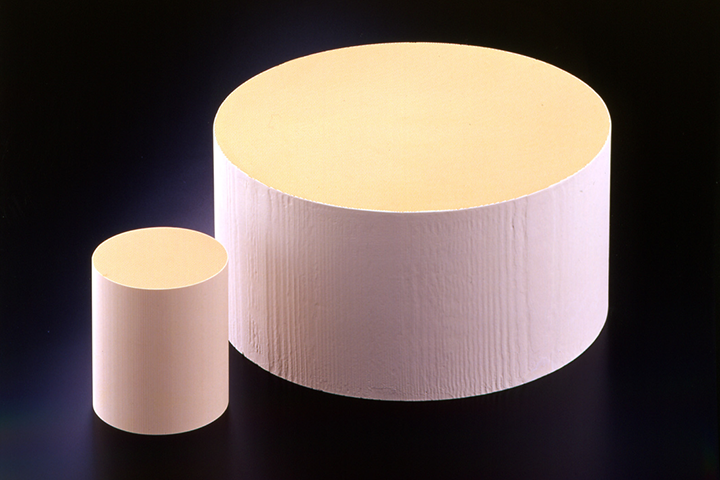
Avoided NOx emissions
HONEYCERAM is a ceramic substrate for catalytic converters to purify harmful contents in the exhaust of automobiles. It carries a catalyst that detoxifies harmful substances by chemical reaction, and its honeycomb structure provides a greater contact surface area for the exhaust and thus gives better purifying performance. Since the launch of mass production in 1976, over 1.5 billion units have been shipped of this essential ceramic product for purifying exhaust. NGK's HONEYCERAM eliminates a total of four million metric tons of NOx per annum*1equivalent to double the annual NOx emissions in Japan*2
*1 Assumption based on installation of exhaust gas system in new cars that are not equipped with such systems
*2 Source: OECD Environmental Statistics (2012)
Products paving the way to achieving the SDGs



